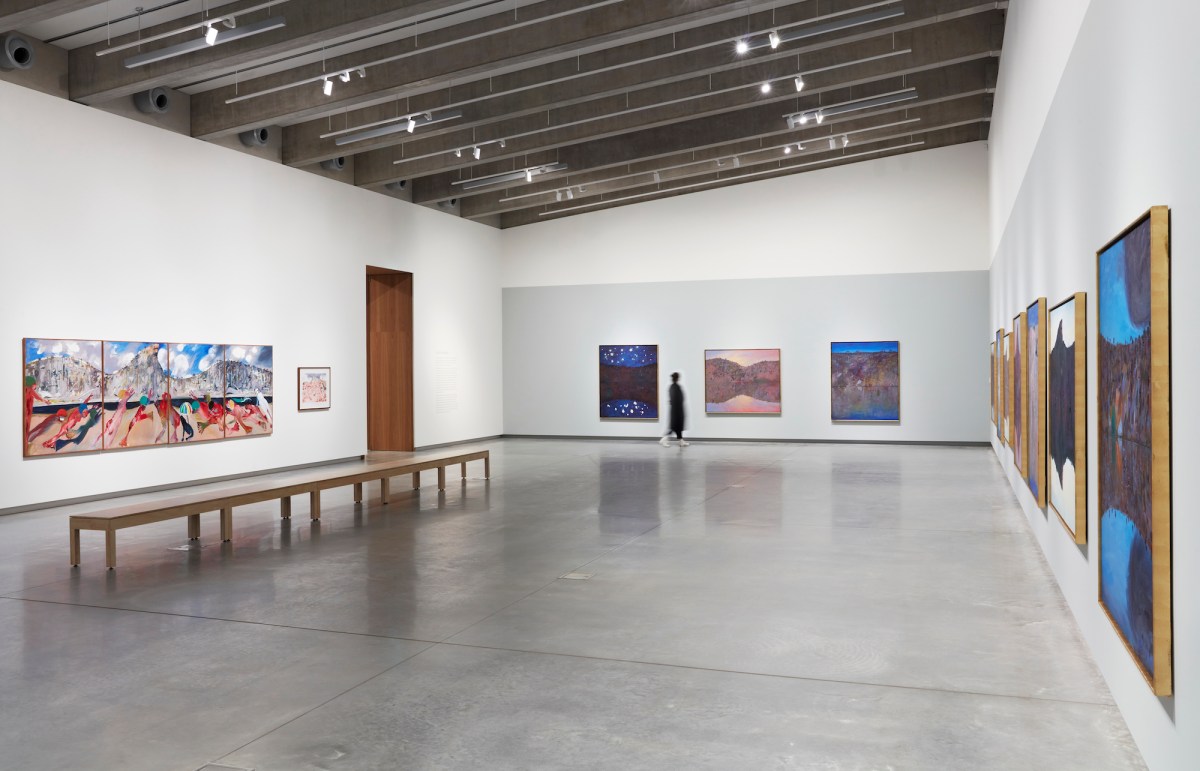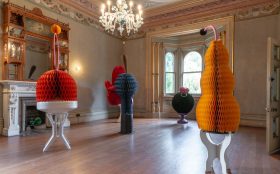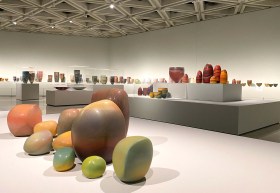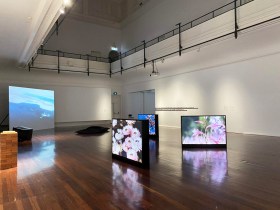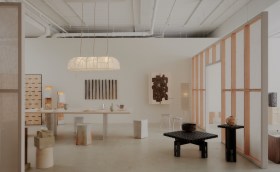A new exhibition at Bundanon Art Museum – Arthur Boyd’s property on the Shoalhaven in regional NSW – opened this weekend (6 July); however, in many ways, it is anything but new.
The exhibition focuses on the year 1984, when Boyd delivered his milestone commission for the Arts Centre Melbourne. While it started off as seven paintings, it quickly grew to 14 – painted in a passionate connection over a short period. Many of us would know those paintings, which have wrapped the Arts Centre’s foyer areas for the last 40 years, but do we know the context in which they were made?
‘The Hawke-Keating Government had just won, the dollar had just been floated. There was all this new reform, the Sex Discrimination Act for women’s rights, the promise of land rights and things were happening in that space,’ explains the curator of the exhibition, Sophie O’Brien.
‘There was also a whole lot of union activity. And, of course, visually it was such an interesting time, because there was no social media. It was TV that you turned on, and there wasn’t a lot of choice. Poster making and fanzines were big,’ continues O’Brien. ‘I remember going out on anti-nuclear marches, and we would have seen the posters and then made a poster ourselves. That’s the media through which we lived.’
O’Brien admits that the curatorial hand is heavy in this exhibition, and we get a glimpse of that in the gallery’s entrance, where a collection of art history books of the day (from her personal collection) sit back-to-back in a snapshot of the collective psyche and aesthetic landscape.
With our first glance across the main gallery at Bundanon, the eye is drawn along the suite of Boyd’s iconic landscapes of the Shoalhaven River and its rocky outcrops, hung loosely along a calming horizon line. They may feel a world away from such societal and political ruptures.
O’Brien, however, presents the thesis that their deep underlying foundation of environmental preservation offers evidence of Boyd’s own radical thinking at the time.
‘I believe he was very astute and clever, and practical, in terms of leveraging what he had, as a successful white male artist of that time,’ explains O’Brien. ‘He found something here that he thought was of great value, and he thought it should be shared, which is the natural environment here at Bundanon.’
With the current closure of the State Theatre for refurbishment, O’Brien has used this commission of 14 paintings as a leap point. It is the first time they have been seen elsewhere, and it has offered a moment to pause and connect, and perhaps provided a window into understanding how Boyd used his marketplace and connection with the public to save this land.
‘It was a very active and targeted idea,’ O’Brien tells ArtsHub.
Within glance of the 14 paintings is Don Featherstone’s 1985 film Arthur Boyd: Figures in the Landscape (shot at Bundanon), and beside it a recent gift to the Bundanon Trust, Pulpit Rock, Bathers and Muzzled Dog (1985), an expansive painting made a year after the commission, but showing a dramatic shift.
The exhibition fleshes out that moment and its radicality, if you like, moving into a succession of four smaller groupings of artworks – over 60 of them from other seminal Australian artists of the time. These galleries provide ‘a snapshot into a period of cultural dynamism in Australia, when ideas of landscape, land ownership and environmental protection were actively interrogated,’ says O’Brien. And it is felt by viewers.
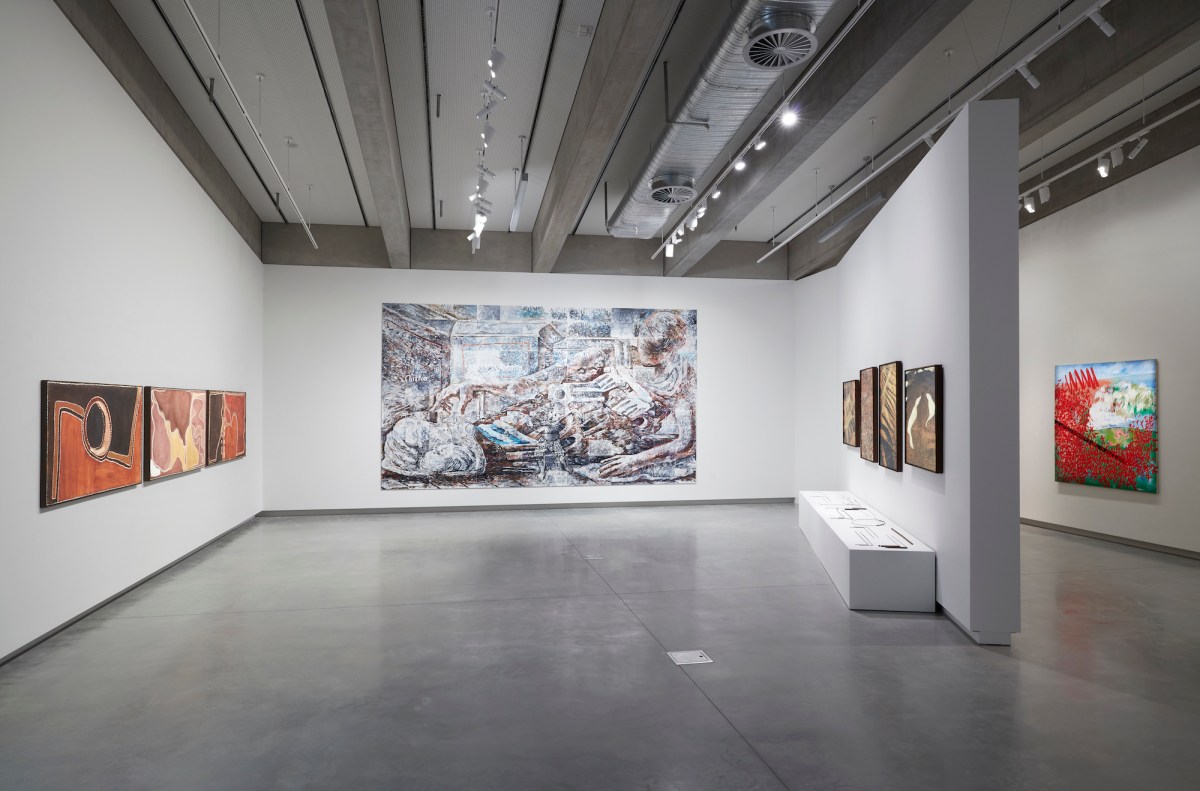
The first room juxtaposes works by Timmy Payungu Tjapangati and Rover Thomas Joolama and Keith Gow’s video Women of Utopia (1984) printing up their batiks, along a long wall. It’s pertinent to remember that 1984 was the year when the inaugural National Aboriginal and Torres Strait Islander Art Awards (NATSIAA) was held.
At the same time, ‘Advance Australia Fair’ was proclaimed as Australia’s national anthem and Western Australia became the last Australian state to abolish capital punishment. It was a nation where duality was seemingly moving closer to the surface.
That notion of land – and landscape – was ever present in the shaping and reshaping of the nation of the day. O’Brien has surrounded these Aboriginal works with landscapes by Timothy Johnson, David Aspden and Robert Macpherson, and a massive multi-tiled work by Imants Tillers, which was exhibited at PS1 in New York in 1984. In it, he echoes Aboriginal handprints found on rock art.
The exhibition then looks at another aspect of making in 1984 with a nod to women artists of the day, Susan Norrie, Judy Cassab and Vivienne Binns. Off to the side is a newly created video nook showing Helen Grace’s Serious Undertakings (1983), which broke new ground in feminist filmmaking. There are also prints and posters here, which were hugely political mediums for voicing change, and a new felt agency for action.
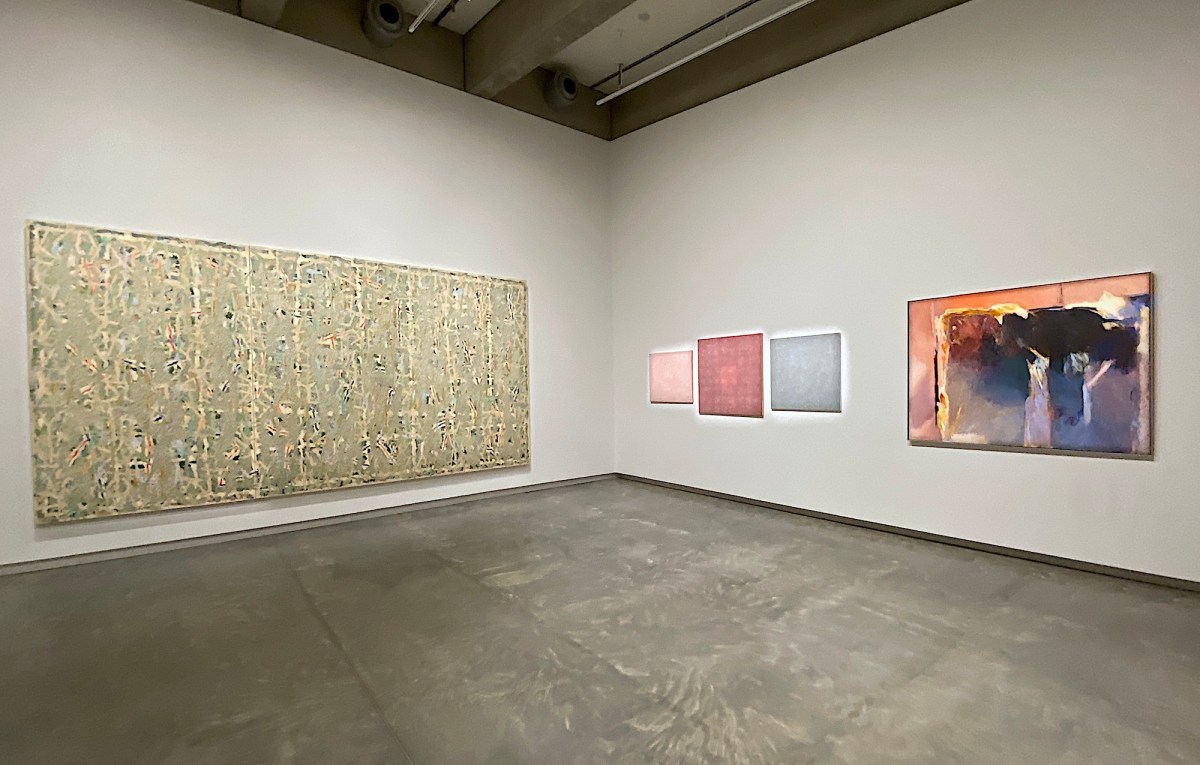
Finally, visitors arrive in an end gallery surrounded by abstract paintings by Liz Coats, Howard Taylor, Robert Jacks, Brian Blanchflower and Mac Betts, along with an expansive painting by John Peart, Naples Green (1985). O’Brien makes the point that a radical contemplation of landscape in their hands was perhaps less about a movement – aka abstraction – and more about physicality, light and resonance of the land, and our connection with it.
Visitors are then forced to retrace their steps, to re-encounter Boyd’s paintings with the perspective of their making. It is a savvy curatorial device well-suited for this exhibition.
Read: Exhibition review: Grace Crowley & Ralph Balson, NGV Australia
The subtlety may be lost on some. Simply, many punters will just be pleased to see Boyd’s work hung in doses (a criticism since the gallery’s opening has been that visitors don’t see enough of his work, after a long journey) – and there is nothing wrong with that pure pleasure.
Equally, Bundanon has created a brand or a reputation for inviting us to extend how we consider history and, importantly, landscape. It is always a palpable experience visiting Bundanon, where everything seemingly comes together as a felt and engaged whole – and this exhibition does it beautifully.
Wilder Times: Arthur Boyd and the mid-1980s landscape
Bundanon Art Museum
Shoalhaven, NSW until 13 October 2024; ticketed
A full public program has been curated across the duration of the exhibition.

